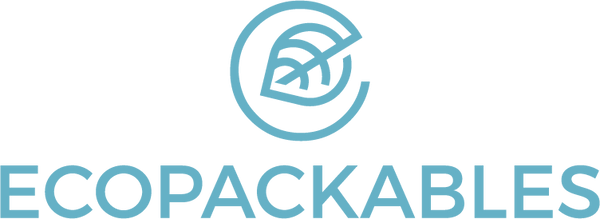In the quest for a more sustainable planet, using recycled content in packaging is one of the most impactful choices businesses can make. It’s not just about reducing waste—it’s about fostering a circular economy, conserving resources, and meeting growing consumer demand for environmentally responsible practices. Here’s why incorporating recycled paper and recycled plastic into your packaging matters, and how it benefits both the planet and your brand.
Reducing Waste and Supporting Circularity
Recycled paper and plastic are essential components of a circular economy, where materials are reused and reimagined rather than discarded. By choosing packaging made from recycled content, businesses help divert significant amounts of waste from landfills and waterways.
Incorporating recycled content into packaging not only conserves resources but also stimulates demand for recycled materials. This increased demand can drive improvements in recycling infrastructure, ensuring that more of the waste placed in recycling bins is effectively processed and reused. Currently, a significant portion of recyclable waste is not recycled due to inadequate infrastructure and market demand. By choosing packaging with recycled content, businesses can help create a market incentive for investments in recycling systems, leading to more efficient and widespread recycling practices.
Conserving Natural Resources
Producing virgin paper and plastic requires a substantial amount of energy, water, and raw materials. Virgin paper is typically made from freshly harvested trees, which contributes to deforestation and disrupts ecosystems. On the other hand, virgin plastic is derived from fossil fuels, a finite resource with a significant environmental footprint.
Using recycled paper helps reduce the demand for timber, preserving forests and the biodiversity they sustain. Similarly, recycled plastic reduces dependency on oil and natural gas extraction. For example, every ton of recycled paper saves approximately 17 trees and thousands of gallons of water.
Lowering Carbon Footprint
Recycled materials, such as PCR plastics and recycled paper, often require significantly less energy to produce than their virgin counterparts. This translates into fewer greenhouse gas emissions and a reduced carbon footprint.
For instance, producing recycled plastic takes up to 50% less energy than manufacturing virgin plastic. This makes it a critical choice for brands aiming to minimize their environmental impact without sacrificing performance.
Maintaining Performance and Versatility
One common misconception about recycled materials is that they are less durable or functional than virgin materials. However, advances in technology have ensured that recycled paper and plastics meet the same high-performance standards. Recycled paper packaging, like kraft mailers or retail boxes, provides strength and protection while being curbside recyclable. Similarly, PCR plastics are flexible, durable, and moisture-resistant, making them ideal for protective mailers and polybags.
For example, EcoPackables offers 100% recycled paper mailers and PCR plastic polymailers that maintain the same functionality and durability as traditional options, while significantly reducing environmental harm.
Meeting Consumer Expectations
Sustainability is a growing priority for consumers. According to surveys, many customers are more likely to support brands that actively prioritize eco-friendly practices, including the use of recycled materials. Packaging with recycled content isn’t just a practical choice—it’s also a powerful marketing tool that communicates your commitment to environmental responsibility.
By highlighting your use of recycled materials on packaging and in marketing, you can build trust and loyalty with eco-conscious customers, often leading to increased sales and brand advocacy.
Overcoming Challenges with Recycled Content
While recycled paper and plastic offer many benefits, there are some challenges to consider. Recycled fibers in paper are shorter than virgin fibers, which can result in slightly reduced strength. However, this can be mitigated by designing thicker or reinforced packaging. Similarly, PCR plastics may show minor imperfections like specks or a slightly matte finish, but these can be embraced as part of the aesthetic or masked with creative designs.
EcoPackables works closely with brands to manage these challenges, ensuring that the packaging meets performance standards and aligns with sustainability goals.
Aligning with EPR and Regulatory Goals
Governments worldwide are introducing policies that incentivize the use of recycled materials, such as Extended Producer Responsibility (EPR) regulations. By using recycled paper and plastics now, brands can stay ahead of regulatory changes, reduce potential fees, and demonstrate proactive leadership in sustainability.
Recycled Content in Your Packaging
EcoPackables specializes in packaging solutions that maximize recycled content. Our kraft mailers and retail boxes are made from 100% recycled paper, while our PCR plastic mailers and polybags include some of the highest recycled content in the industry. These products are not just eco-friendly but also competitively priced, making them a win for both the planet and your bottom line.
Choosing packaging made from recycled content is a smart, sustainable decision that reduces waste, conserves resources, and meets the expectations of today’s environmentally conscious consumers. Together, we can create packaging solutions that protect your products and the planet. Ready to make the switch? Let’s start building your sustainable future today.

